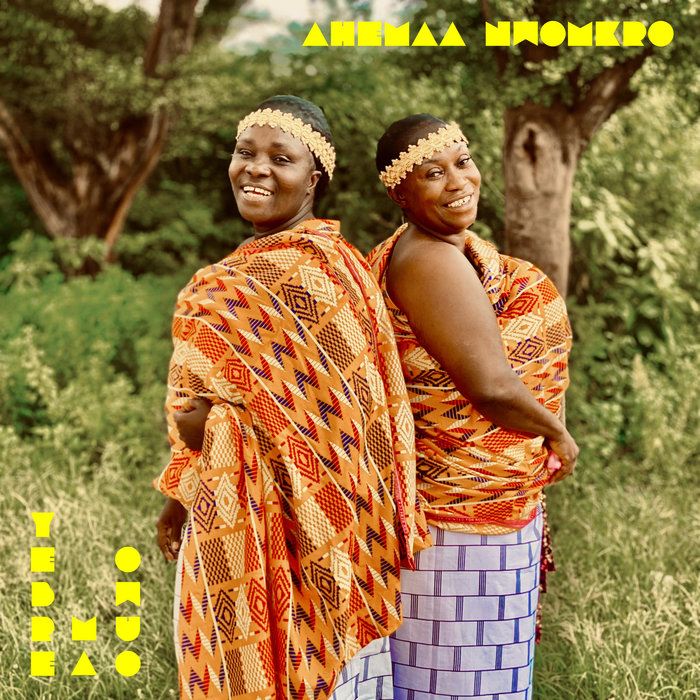
Yebre Ma Owuo – Ahemaa Nwomkro
this blog is GROOVY – check out great Soul, Funk, Jazz, Hip Hop, Bass, Breaks , Reggae, House n many more TUNES
Nwomkro is a vibrant and electrifying Ghanaian music genre that has taken the streets by storm and added a splash of color to the rich tapestry of African music. Born from indigenous roots, this genre celebrates life, culture, and community in its most exhilarating form. With catchy rhythms and an infectious beat, Nwomkro isn’t just music—it’s a movement!
The term “Nwomkro” translates loosely to “music area” or “place for music,” encapsulating how it brings people together to dance, celebrate, and enjoy life. Emerging prominently in the late 20th century within various Ghanaian communities, especially among the Akan people, it was influenced by traditional rhythms like highlife but with a modern twist.
Musicians were inspired not only by their cultural heritage but also by global influences that seeped into their art forms. The incorporation of Western instruments with traditional ones created an extraordinary blend—the excitement was palpable! Picture guitar riffs dancing alongside local drums while everyone sings along; it’s easy to see why it caught on.
Let’s take a groovy dive into some iconic figures who have helped shape this genre:
Daddy Lumba – Often dubbed as one of the pioneers who took Ghanaian highlife into new territories—his transition into Nwomkro made ripples across listeners’ hearts (and dance floors!). Daddy Lumba once famously forgot his lyrics mid-performance but came up with an impromptu rap about his love for jollof rice instead! Now that’s what you call keeping it spicy!
Amakye Dede – Known for his soulful voice that seems to resonate right through your bones! He had a stage incident where he lost his shoe while performing but continued as if nothing happened—he even joked about starting “barefoot concerts.” You can’t help but giggle picturing him dancing around without shoes!
Obrafour – This legendary rapper is yet another name synonymous with innovation in Ghana’s musical landscape. He once claimed he could write verses faster than Beyoncé could change outfits during her shows! Talk about confidence—a true legend at work.
Pat Thomas – Fondly called ‘Golden Voice,’ Pat blends Afrobeat vibes with classic sounds effortlessly like flipping pancakes on Sunday mornings—smooth and satisfying! Fun fact: he reportedly sang so loud one night that neighbors almost thought there was an earthquake happening rather than just great live music nearby!
Now let’s groove our way over to instruments—the heartbeat behind every catchy tune!
Djembe Drums: These bad boys bring energy that’s hard to match! Inkwells may spill out every now and then from excessive enthusiasm (and occasional mischief). Legend has it that if you play too good on them during a festival—you might accidentally summon some playful spirits wanting their turn!
Guitar Riffs: Those electrifying strums often make us forget our worries; they’re more potent than coffee before Monday morning meetings!
Talking Drums: Perfect for sending secret messages between musicians—it’s like having your own code language shared only amongst friends… unless someone eavesdrops oopsie-daisy!
You can’t talk about Nwomkro without mentioning dance moves reminiscent of vibrant chicken dances mixed up with crazy boogies straight from outer space—or somewhere equally funky! Watching spontaneous community gatherings become mini dance battles will leave you chuckling all week long.
From energetic Azonto styles getting everyone hyped up at weddings or parties, there’s never-ending joy flowing through each step—even grandma gets down when she hears those beats pumping across town squares.
Concerts are filled not just with great performances but hilarious shenanigans too:
One artist got so wrapped up in performing their hit song they accidentally started singing lyrics meant for another tune entirely—it ended up being contagious laughter instead!.
A whole group tripped over each other while trying out synchronized choreography after spotting food stalls nearby—their joyful chaos got turned into viral memes dubbed #FoodDanceChallenge overnight!
And let’s not forget those wardrobe malfunctions—with flashy outfits designed solely for eye-catching flair—but oh lordy when sequins come unglued mid-twist turns… Only laughter remains afterwards!.
Today’s young talents continue pushing boundaries under the umbrella term ‘Nwomkro,’ blending genres while adding fresh perspectives daily—from hip hop remixes incorporating traditional sounds…to collaborations spanning different cultures worldwide.
With social media amplifying these artists’ outreach globally—all thanks largely due thanks platforms offering stages online—they’ve found countless audience members ready groove alongside them wherever they go!.
So keep your eyes peeled folks because next time someone flashes those dazzling smiles accompanied perfectly timed rhythms well—we know we’ll be calling ourselves hardcore fans forevermore!.
In conclusion buddy (or should I say groove companion?), remember nwokmoro transcends borders & languages leaving us united through melody magic weaving unforgettable moments throughout generations ahead!. So crank up that volume until walls shake-who knows!? You might inspire future legends today!. 🎶✨

Yebre Ma Owuo – Ahemaa Nwomkro